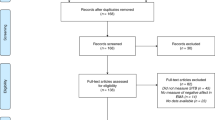Abstract
This article is intended to acquaint the reader with the concept of vengeance. Conceptualized as the intense, compelling wish or intention to get even, right a wrong, or avenge an injury, vengeance is best understood on a continuum from innocuous retaliatory fantasies/actions on one end of the continuum to meeting out of death and destruction on the other end. This article identifies various manifestations of vengeance, discusses theoretical formulations related to affects in general and vengeance, in particular, and presents a series of case vignettes which highlight the adaptive and maladaptive function of this psychological phenomenon.
Similar content being viewed by others
References
Abraham, K. (1924). The influence of oral erotism in character formulation.Selected Papers of Karl Abraham New York: Basic Books.
Arlow, J. (1980). The revenge motive in the primal scene.Journal of the American Psychoanalytic Association, 28, 519–541.
Basch, M.F. (1992). The significance of a theory of affect in psychoanalytic technique. In T. Shapiro and R. Emde (Eds.),Affects: Psychoanalytic Perspective (pp. 291–303). Connecticut: International Universities Press.
Bluestone, H. & Travin, S. (1984). Murder: The ultimate conflict.American Journal of Psychoanalysis, 44(2), 147–167.
Boris, J. (1990). Identification with a vengeance.International Journal of Psychoanalysis, 71, 127–140.
Brenner, C. (1992). A psychoanalytic theory of affects. In T. Shapiro & R. Emde (Eds.),Affects: Psychoanalytic perspectives (pp. 305–314). Connecticut: International Universities Press.
Daniels, M. (1969). Pathological vindictiveness and the vindictive character.Psychoanalytic Review, 56(2), 169–196.
Fenichel, O. (1945).The psychoanalytic theory of neurosis. New York: Norton Books.
Fromm, E. (1973).The anatomy of human destructiveness. New York: Holt, Rinehart & Winston.
Hackett, G. & Lerner, M. (1987, December 21). Settling a score.Newsweek. p. 43.
Horney, K. (1948). The value of vindictiveness.American Journal of Psychoanalysis, 8, 3–12.
Kernberg, O. (1992). The psychopathology of hatred. In T. Shapiro & R. Emde (Eds.),Affects: Psvchoanalytic Perspectives (p. 209–238). Connecticut: International Universities Press.
Keyishian, J. (1982). Karen Horney on “the value of vindictiveness”.American Journal of Psychoanalysis, 42, 21–26.
Kirman, W. (1989). Revenge and accommodation in the family.Modern Psychoanalysis, 14,(1), 89–95.
Kohut, H. (1972). Thoughts on narcissism and narcissistic rage.Psychoanalytic Study of the Child, 27, 360–400.
Marks, M. (1988). Remorse, revenge and forgiveness.Psychotherapy Patient, 5, 317–330.
Marzuk, P., Tardiff, K., & Hirsch, C. (1992) The epidemiology of murder-suicide.The Journal of the American Medical Association, 267, 3179–3183.
Nelson, M. (1973). On the utility of spite.Psychoanalytic Review, 60(1), 91–100.
Searles, H. (1962). Scorn, disillusionment and adoration in the psychotherapy of schizophrenic.Psychoanalysis and Psychoanalytic Review, 49(3), 142–150.
— (1956). The psychodynamics of vengefulness.Psychiatry, 19, 31–39.
Sims, C. (1992, March 1). A commissioner done in by a staff she offended.New York Times, 4, p. 6.
Socarides, C. (1966). On vengeance.Journal of American Psychoanalytic Association, 14(2), 356–375.
Stein, R. (1991).Psychoanalytic theories of affect. New York: Preaeger Publishers.
Tomkins, S.S. (1962–1963).Affect, Imagery, Consciousness. 2 vols. New York: Springer.
Turow, S. (1987)Presumed Innocent. Farrar, Strauss & Geroux: New York.
Author information
Authors and Affiliations
Rights and permissions
About this article
Cite this article
Gabriel, M.A., Monaco, G.W. “Getting even”: Clinical considerations of adaptive and maladaptive vengeance. Clin Soc Work J 22, 165–178 (1994). https://doi.org/10.1007/BF02190472
Issue Date:
DOI: https://doi.org/10.1007/BF02190472




